-
 Bitcoin
Bitcoin $116500
1.98% -
 Ethereum
Ethereum $3851
6.94% -
 XRP
XRP $3.070
3.95% -
 Tether USDt
Tether USDt $1.000
0.04% -
 BNB
BNB $774.7
1.77% -
 Solana
Solana $171.9
4.66% -
 USDC
USDC $1.000
0.01% -
 Dogecoin
Dogecoin $0.2142
6.71% -
 TRON
TRON $0.3387
1.28% -
 Cardano
Cardano $0.7678
5.61% -
 Sui
Sui $3.747
9.68% -
 Hyperliquid
Hyperliquid $39.16
3.69% -
 Stellar
Stellar $0.4157
6.28% -
 Chainlink
Chainlink $17.93
9.21% -
 Bitcoin Cash
Bitcoin Cash $578.1
3.28% -
 Hedera
Hedera $0.2531
5.60% -
 Ethena USDe
Ethena USDe $1.001
-0.02% -
 Avalanche
Avalanche $22.75
3.82% -
 Litecoin
Litecoin $120.1
3.76% -
 UNUS SED LEO
UNUS SED LEO $8.953
-0.37% -
 Toncoin
Toncoin $3.323
4.76% -
 Shiba Inu
Shiba Inu $0.00001266
4.22% -
 Uniswap
Uniswap $10.13
7.08% -
 Polkadot
Polkadot $3.786
5.09% -
 Dai
Dai $1.000
-0.02% -
 Monero
Monero $273.0
-5.03% -
 Bitget Token
Bitget Token $4.391
1.62% -
 Cronos
Cronos $0.1480
5.45% -
 Pepe
Pepe $0.00001091
5.80% -
 Ethena
Ethena $0.6314
11.93%
Spot ETH ETF vs. Futures ETH ETF: Key Differences Explained
A spot ETH ETF holds actual Ethereum, offering direct price exposure, while a futures ETF uses derivatives, introducing roll costs and potential tracking differences.
Aug 07, 2025 at 07:31 am
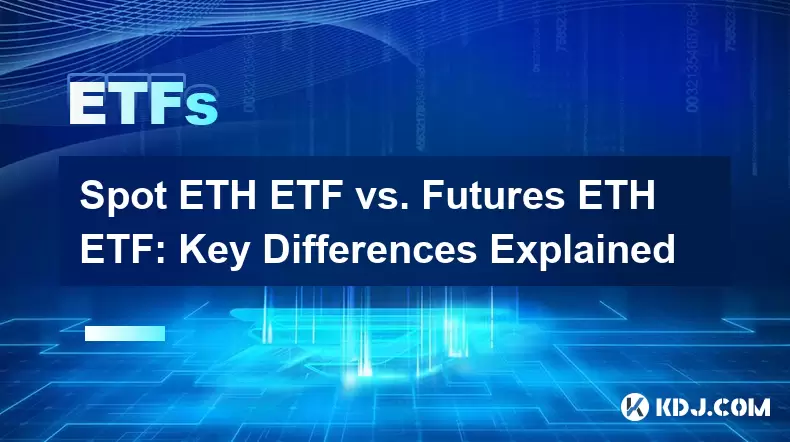
Understanding Spot ETH ETFs
A Spot ETH ETF is an exchange-traded fund that directly holds Ethereum (ETH) as its underlying asset. This means the fund purchases and stores actual ETH on the blockchain, typically through custodial services regulated by financial authorities. Investors in a spot ETF gain exposure to the real-time price movements of ETH because the fund's net asset value (NAV) is directly tied to the current market price of Ethereum. Regulatory approval for spot ETH ETFs has been a significant milestone, especially following the SEC's precedent with Bitcoin spot ETFs.
One of the primary advantages of a spot ETH ETF is its direct correlation with Ethereum’s spot price. Since the fund owns ETH outright, it avoids the complexities of futures contracts, such as roll yield and contango. This structure appeals to long-term investors seeking pure exposure to ETH without derivative-based distortions. The transparency of holdings is another key factor—authorized participants and investors can often view the exact amount of ETH held by the fund on a daily basis.
How Spot ETH ETFs Operate: The Creation and Redemption Process
The mechanics behind spot ETH ETFs rely on an authorized participant (AP) system, similar to traditional ETFs. APs are large financial institutions that interact directly with the ETF issuer to create or redeem shares. When demand for the ETF rises, an AP purchases ETH on the open market and delivers it to the fund’s custodian in exchange for new ETF shares. These shares are then sold on public exchanges.
- An AP acquires a specified amount of ETH from regulated exchanges or OTC desks
- The ETH is transferred to a qualified custodian, such as Coinbase Custody or BitGo
- Upon confirmation of delivery, the AP receives a creation unit (typically 25,000 ETF shares)
- These shares enter the secondary market, where retail investors can buy them via brokers
Redemption works in reverse: APs collect ETF shares from the market, return them to the issuer, and receive ETH in return. This mechanism ensures that the ETF’s market price stays closely aligned with its NAV, minimizing premium or discount deviations.
Exploring Futures ETH ETFs
In contrast, a Futures ETH ETF does not hold actual Ethereum. Instead, it invests in CME-traded Ethereum futures contracts. These contracts are agreements to buy or sell ETH at a predetermined price on a future date. The fund gains exposure to ETH price movements indirectly through these derivatives. Because futures prices can differ from spot prices due to market expectations, the performance of futures ETFs may diverge from that of spot ETFs over time.
One major characteristic of futures-based ETFs is contract expiration and rolling. As each futures contract nears its settlement date, the fund must sell it and purchase a new contract with a later expiry. This process, known as "rolling," can lead to roll yield losses if the futures market is in contango (when future prices are higher than spot prices). Conversely, in backwardation (future prices lower than spot), rolling can generate gains.
Key Structural Differences Between Spot and Futures ETH ETFs
The fundamental distinction lies in the underlying asset ownership. A spot ETH ETF owns ETH directly, while a futures ETH ETF holds derivative contracts. This difference impacts transparency, cost structure, and tax treatment.
- Transparency: Spot ETFs disclose daily holdings of ETH; futures ETFs report contract positions, which are less intuitive
- Tracking Error: Spot ETFs closely track ETH’s spot price; futures ETFs may experience drift due to roll costs and basis differences
- Regulatory Oversight: Spot ETFs require custodial solutions meeting SEC standards; futures ETFs fall under CFTC jurisdiction via CME contracts
- Counterparty Risk: Spot ETFs face custodial risk; futures ETFs face exchange and clearinghouse risk, though both are generally low
Additionally, spot ETFs are typically more suitable for long-term holders, while futures ETFs may appeal to traders seeking short-term leverage or hedging tools, though most ETH futures ETFs remain unleveraged.
Cost and Tax Implications for Investors
Expense ratios vary between spot and futures ETH ETFs. Spot ETFs often have lower operational complexity, translating to potentially lower fees. However, custodial and insurance costs for holding ETH can increase expenses. Futures ETFs incur trading costs from frequent contract rolling, which may result in higher expense ratios.
From a tax perspective, U.S. investors face different treatment:
- Spot ETH ETFs structured as grantor trusts (like the Grayscale Ethereum Trust) are taxed as collectibles, subject to a maximum 28% long-term capital gains rate
- Futures ETH ETFs fall under Section 1256 of the Internal Revenue Code, allowing 60/40 tax treatment—60% of gains taxed at long-term rates, 40% at short-term, regardless of holding period
Investors should consult tax professionals, as structure-specific nuances can significantly impact after-tax returns.
Liquidity and Market Access Considerations
Spot ETH ETFs benefit from continuous pricing aligned with global ETH markets, although trading occurs only during U.S. exchange hours. Their liquidity depends on AP activity and the ease of creating or redeeming shares. High AP participation ensures tight bid-ask spreads.
Futures ETH ETFs derive liquidity from the underlying futures market. The CME Ether futures market has grown steadily, but volume remains lower than spot ETH trading on crypto exchanges. This can lead to wider spreads and lower trading efficiency, especially during volatile periods.
- Spot ETFs offer smoother intraday pricing due to real-time NAV updates
- Futures ETFs may exhibit pricing lags if futures markets are illiquid
- Both types are accessible through standard brokerage accounts, unlike direct crypto wallets
Frequently Asked Questions
Can I convert a futures ETH ETF into a spot ETH ETF directly?
No, there is no direct conversion mechanism. To switch exposure, you must sell shares of the futures ETF and purchase shares of a spot ETF through your brokerage platform. This involves two separate transactions and may trigger capital gains taxes.
Do spot ETH ETFs provide staking rewards?
Currently, most spot ETH ETFs do not distribute staking rewards to shareholders. While Ethereum supports staking, regulatory and structural constraints prevent ETFs from participating in staking or passing rewards to investors. Some issuers are exploring staking-enabled structures, but none are widely available as of now.
Are futures ETH ETFs more volatile than spot ETH ETFs?
Not necessarily due to volatility in ETH price, but futures ETFs can exhibit greater performance divergence over time because of contango and roll mechanics. Short-term price swings may be similar, but long-term returns can differ significantly due to compounding roll costs.
How do I verify the ETH holdings of a spot ETH ETF?
Most spot ETH ETF issuers publish a daily holdings report on their official website. This document lists the exact amount of ETH held in custody, often with wallet addresses or custodian attestations. Third-party blockchain analytics tools can sometimes verify on-chain movements, though custodial wallets may not be publicly traceable.
Disclaimer:info@kdj.com
The information provided is not trading advice. kdj.com does not assume any responsibility for any investments made based on the information provided in this article. Cryptocurrencies are highly volatile and it is highly recommended that you invest with caution after thorough research!
If you believe that the content used on this website infringes your copyright, please contact us immediately (info@kdj.com) and we will delete it promptly.
- Dogecoin, Crypto, and the 25x Gains Dream: What's Next?
- 2025-08-07 20:50:12
- Dogecoin: A Second Chance for the OG Meme Coin?
- 2025-08-07 20:50:12
- BlockchainFX: Your Choice for Long-Term Crypto Gains?
- 2025-08-07 21:10:12
- Pepe Dollar's Presale Mania: Memecoin Staking and the Crypto Revolution
- 2025-08-07 21:10:12
- Aave Users Targeted in Sophisticated Phishing Scam: A DeFi Reality Check
- 2025-08-07 21:15:56
- Ollama Turbo & GPT-OSS: Revolutionizing AI Model Accessibility and Speed
- 2025-08-07 20:29:33
Related knowledge
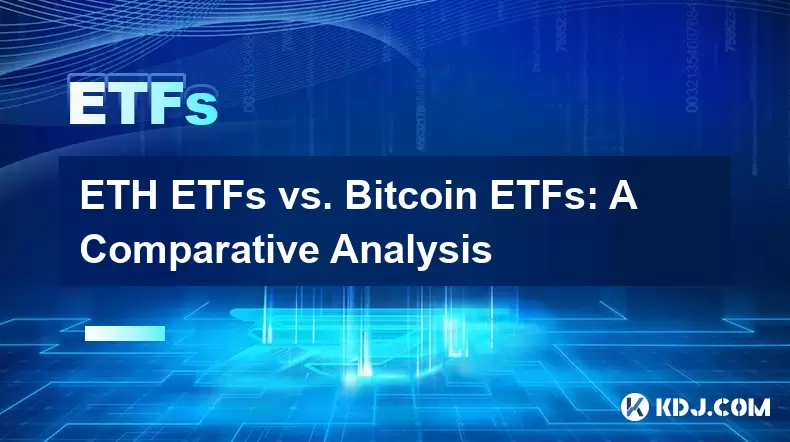
ETH ETFs vs. Bitcoin ETFs: A Comparative Analysis
Aug 07,2025 at 02:08pm
Understanding the Fundamentals of ETH and Bitcoin ETFsExchange-Traded Funds (ETFs) have become a mainstream financial instrument for gaining exposure ...

A Complete Guide to Spot ETH ETFs
Aug 07,2025 at 10:08pm
Understanding Spot ETH ETFs and Their Core FunctionalityA Spot ETH ETF is an exchange-traded fund that directly holds Ether (ETH) as its underlying as...

Spot ETH ETF vs. Futures ETH ETF: Key Differences Explained
Aug 07,2025 at 07:31am
Understanding Spot ETH ETFsA Spot ETH ETF is an exchange-traded fund that directly holds Ethereum (ETH) as its underlying asset. This means the fund p...
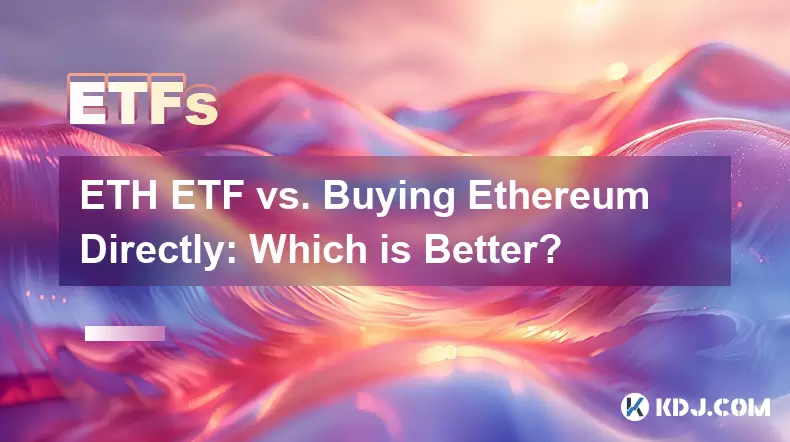
ETH ETF vs. Buying Ethereum Directly: Which is Better?
Aug 07,2025 at 01:36am
Understanding ETH ETFs and Direct Ethereum OwnershipWhen evaluating ETH ETF vs. Buying Ethereum Directly, it's essential to understand what each optio...
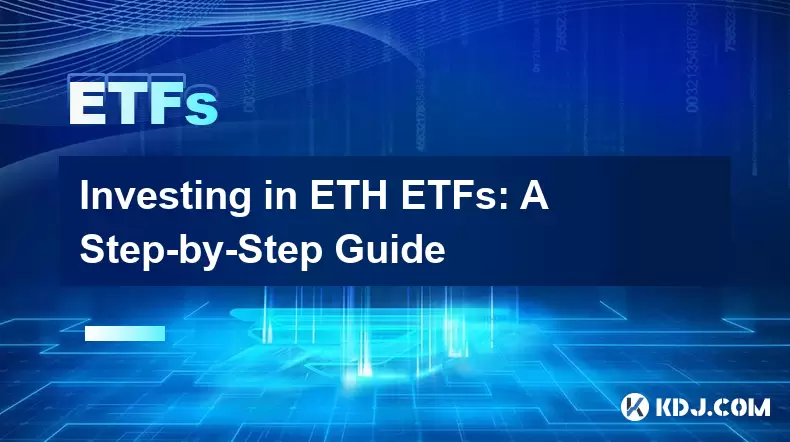
Investing in ETH ETFs: A Step-by-Step Guide
Aug 07,2025 at 05:44am
Understanding ETH ETFs and Their Role in Crypto InvestmentETH ETFs, or Ethereum Exchange-Traded Funds, represent a financial product that allows inves...
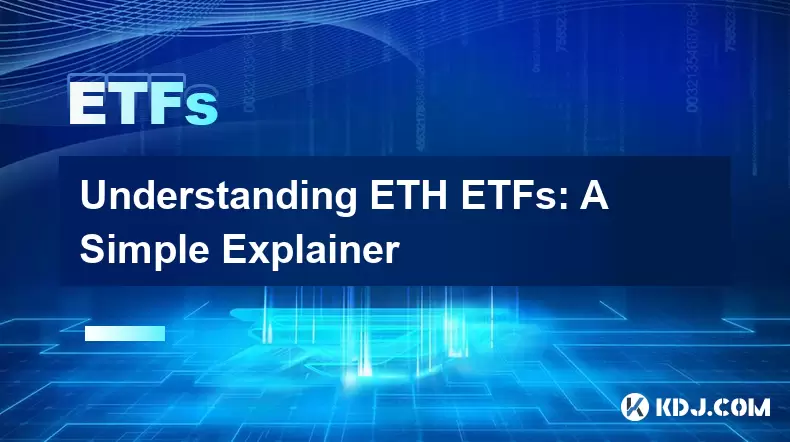
Understanding ETH ETFs: A Simple Explainer
Aug 07,2025 at 09:35am
What Are ETH ETFs and How Do They Work?ETH ETFs, or Ethereum Exchange-Traded Funds, are investment vehicles that allow investors to gain exposure to t...

ETH ETFs vs. Bitcoin ETFs: A Comparative Analysis
Aug 07,2025 at 02:08pm
Understanding the Fundamentals of ETH and Bitcoin ETFsExchange-Traded Funds (ETFs) have become a mainstream financial instrument for gaining exposure ...

A Complete Guide to Spot ETH ETFs
Aug 07,2025 at 10:08pm
Understanding Spot ETH ETFs and Their Core FunctionalityA Spot ETH ETF is an exchange-traded fund that directly holds Ether (ETH) as its underlying as...

Spot ETH ETF vs. Futures ETH ETF: Key Differences Explained
Aug 07,2025 at 07:31am
Understanding Spot ETH ETFsA Spot ETH ETF is an exchange-traded fund that directly holds Ethereum (ETH) as its underlying asset. This means the fund p...

ETH ETF vs. Buying Ethereum Directly: Which is Better?
Aug 07,2025 at 01:36am
Understanding ETH ETFs and Direct Ethereum OwnershipWhen evaluating ETH ETF vs. Buying Ethereum Directly, it's essential to understand what each optio...

Investing in ETH ETFs: A Step-by-Step Guide
Aug 07,2025 at 05:44am
Understanding ETH ETFs and Their Role in Crypto InvestmentETH ETFs, or Ethereum Exchange-Traded Funds, represent a financial product that allows inves...

Understanding ETH ETFs: A Simple Explainer
Aug 07,2025 at 09:35am
What Are ETH ETFs and How Do They Work?ETH ETFs, or Ethereum Exchange-Traded Funds, are investment vehicles that allow investors to gain exposure to t...
See all articles

























































































